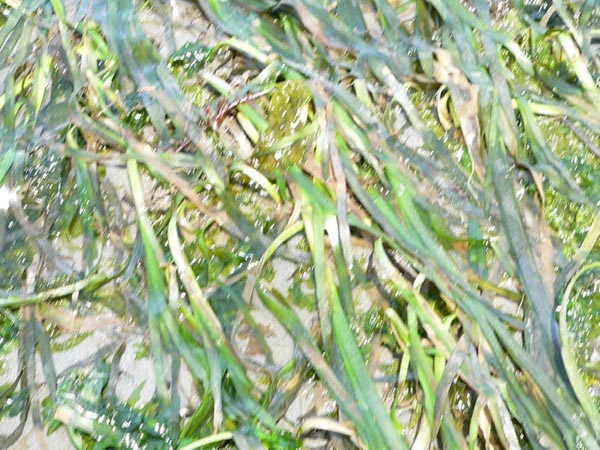Photo Documentation of Commercial Geoduck Farming
Powerpoint Presentation |
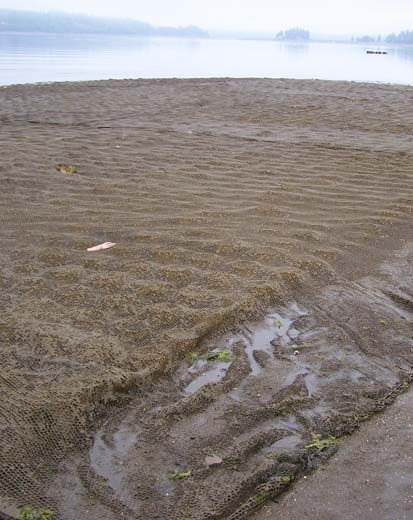 |
Sustainable Shellfish |
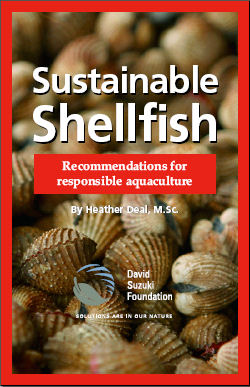 |
||
Slide Show |
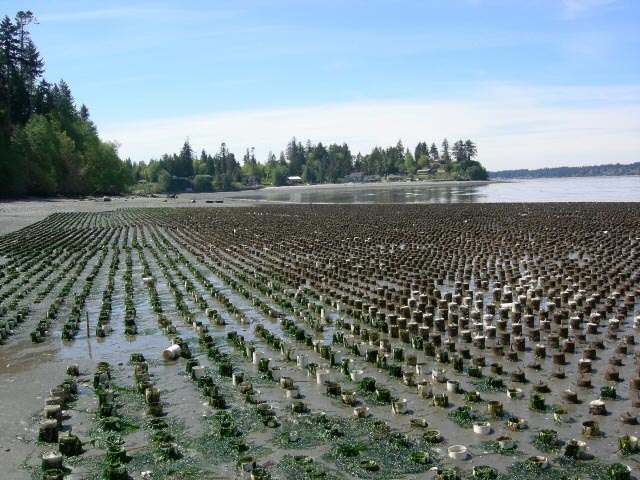 |
Eagle Rescue |
 |
Zangle Cove Story
by Protect Our Shoreline, a Group of Concerned Shoreline Owners in Thurston County.
 |
Four commercial geoduck farms have been planted in Zangle Cove between 2003 and 2006. We believe there are currently 2-3 acres of geoduck plantings with approximately 43,500 geoducks per acre of PVC pipes. These farms are entirely or partially visible during low tide. |
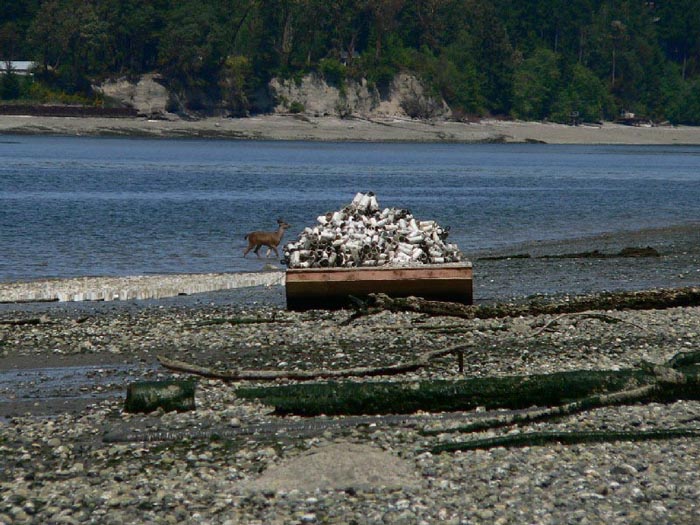 |
The geoduck operator anchored a barge on the beach during May 2006. It was piled with PVC pipe for the new farm. Just to the left of the barge you can see a deer in the water.
Zangle Cove is not large, but it has abundant wildlife including deer, red fox, bald eagles, great blue heron, otters, seal, large crabs, salmon and native geoducks along with many other marine animals and birds. |
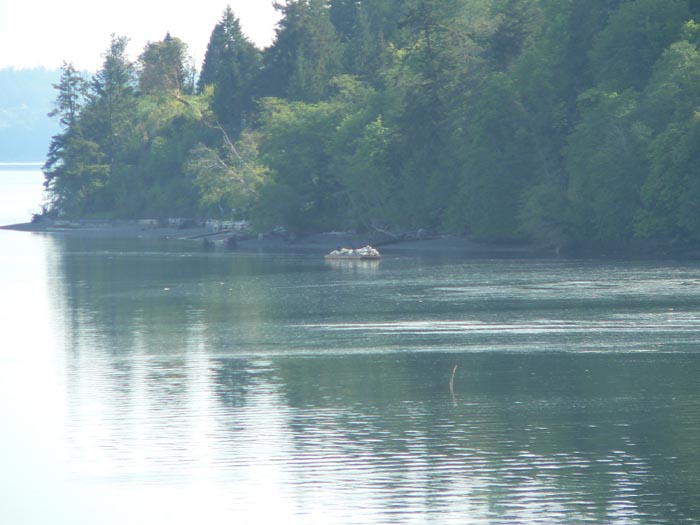 |
This is the geoduck barge at high tide. With the exception of a few bulkheads, much of the shoreline on the east side of Zangle Cove is in a natural state. Tribal fishermen come every fall to fish in these waters during the salmon runs. |
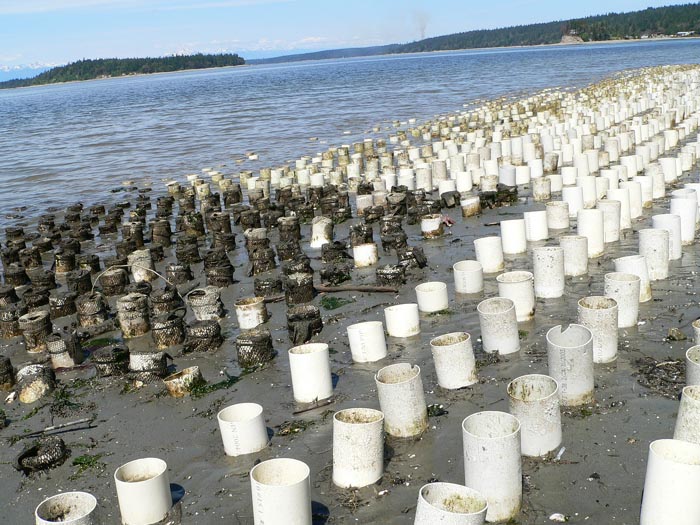 |
This is the partially completed planting on the new geoduck farm on Zangle Cove in early May 2006. The geoduck operator we spoke to asked for a 12 year lease. This would calculate to 3-4 harvests, depending on market conditions, with the potential for indefinite extension of the lease. Even though the PVC pipes are removed after about 18 months, the PVC forest would be replanted after harvest, making it a semi-permanent structure. |
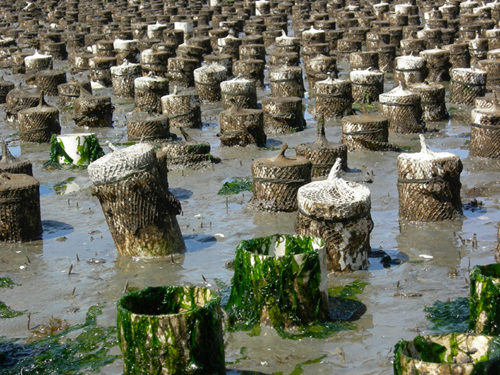 |
The baby geoducks are placed into the pipes which are covered with netting to preclude predators. In this photo you can see that the netting has come off many of the pipes. The escaped netting often washes up on the other side of the Cove or possibly it has become entangled with marine life. We have collected many of these nets on our beach. |
 |
Net tops from the geoduck farms are continually found on the beach across the Zangle Cove from the farms. This collection was found during a 3-day period May 27-29, 2006 on the west side of Zangle Cove along an approximately 500 feet stretch of low bank sandy beach. |
 |
Thick rubber bands are used to secure the netting top to the PVC tube. Both nets and rubber bands frequently come off the tubes. |
 |
After about a year, parts of the farm look like this. Many of the individual nets have floated away, there are rubber bands in the sand, many PVC pipes have been broken or turned over by wave action or objects in the water striking them. |
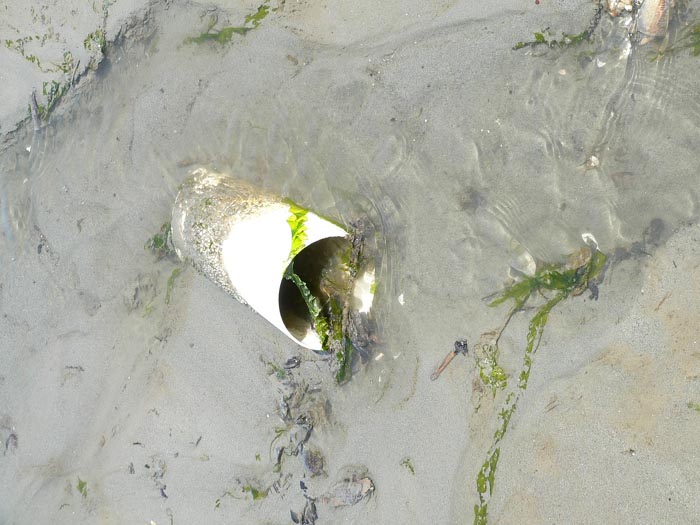 |
Often pipes come loose from their original location and wash to another location to become half buried in the sediment. |
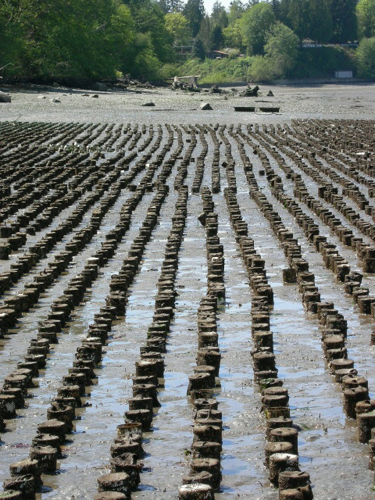 |
Because of the curvature of Zangle Cove and the position of privately owned tidelands, two of the farms cut off access to the water at low tide for adjacent property owners. |
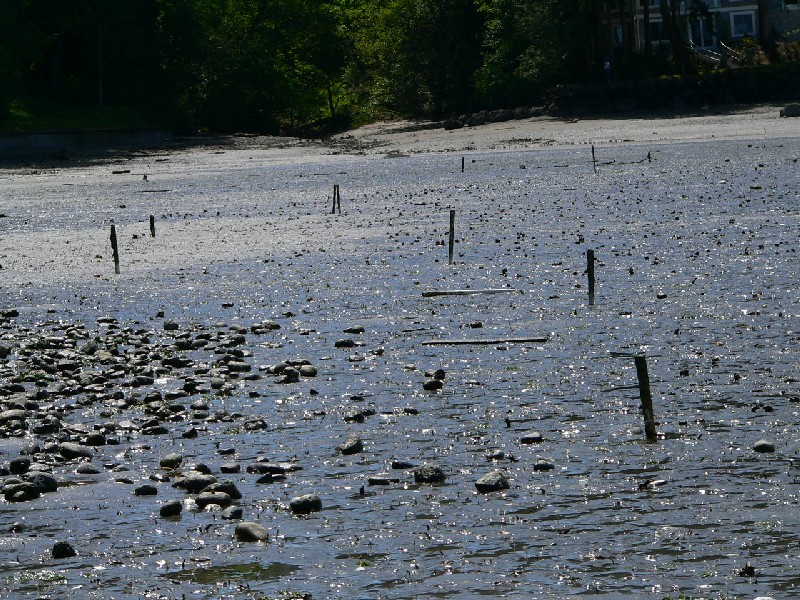 |
After about 12-18 months, the PVC pipes are removed so that the geoducks can grow on their own. What is left are metal stakes and rebar sticking up out of the sand to mark the boundaries of the property. When the tide comes in this will be a hazard to swimmers, kayakers, waterskiers and other recreational users. The waters of Puget Sound are for everyone, they are not private property |
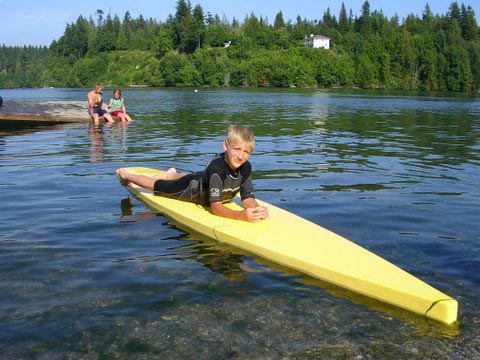 |
Surface water activities in Zangle Cove include boating, kayaking, swimming, water-skiing. |
 |
There is an abundance of marine life in Zangle Cove. This is a photo of about ten large crabs dug out at low tide by a property owner. |
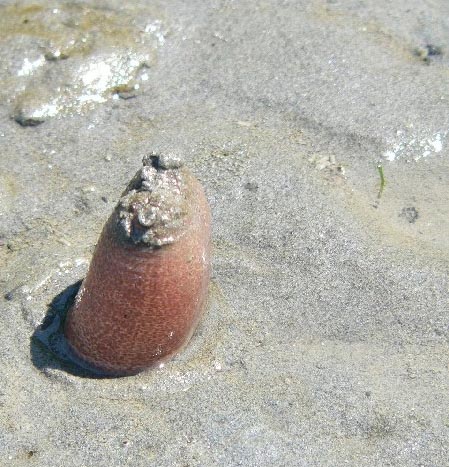 |
This native geoduck lives close to one of the farms. If this geoduck had been in the area of the farm, it would have been "clear-cut" along with any other species such as other clams, oysters, crabs. In Washington State the Tribes have a right to 50% of shellfish harvest in their native harvesting areas. We have been told by a biologist for the Nisqually Tribe that the Tribes come out before a commercial planting to determine if there are native geoducks or other species in the area so that they can take their share of the harvest of native animals. |
 |
This colony of anemones will likely be destroyed if a farm is put in on this part of the tideland. |
 |
Bald eagles and herons nest in Zangle Cove. An extremely shy creature, the Great Blue Heron can be seen every day down on the tidelands. |
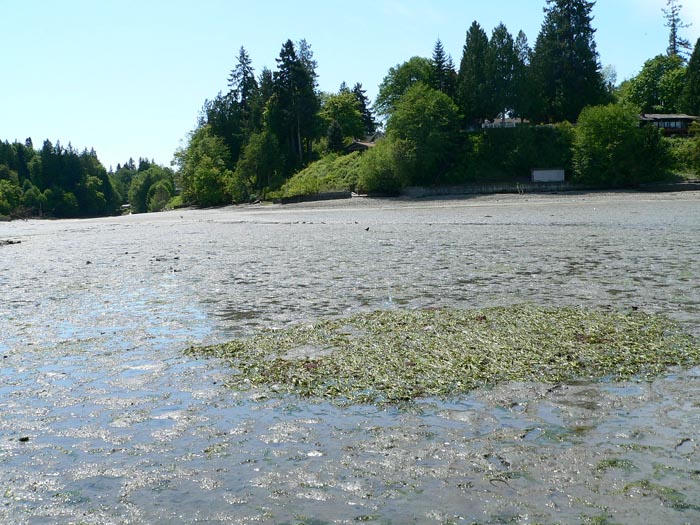 |
We know there are eelgrass beds in Zangle Cove where the fresh water stream empties into the Sound. There are many crabs that live in this eelgrass. Eelgrass is federally protected and is important for salmon spawning habitat. Has an assessment of eelgrass been done for the entire Cove? What are the buffers for eelgrass in relation to geoduck farms? |
 |
On the west side of Zangle Cove is the low bank sandy beach where the geoduck operator wants to lease tideland for another farm on Zangle Cove. This beach has been traditionally used for water activities and recreation. |
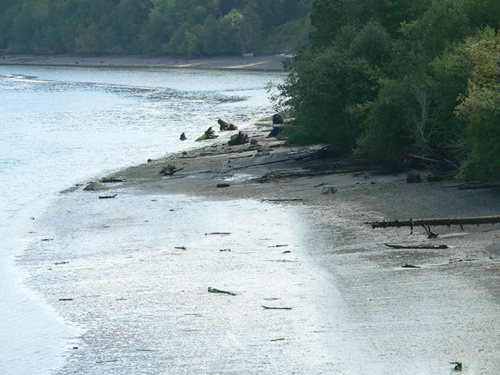 |
This photo shows the pristine nature of the east side of Zangle Cove. The largest farm exists in the area of the background of the photo. Other property owners have stated an intention to lease their tidelands for commercial geoduck farming. |
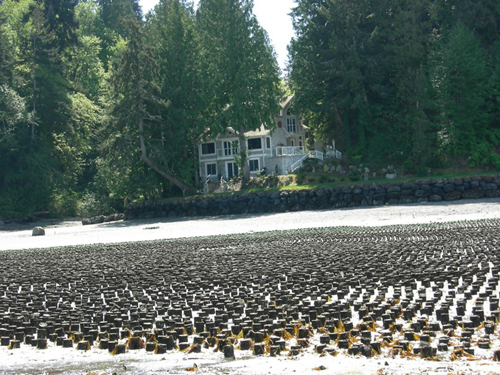 |
Geoduck operators market commercial farming to property owners who have viable tideland. They do this through phone calls and neighborhood meetings hosted by owners who intend to sign leases. The geoduck operator we spoke to claimed he did not need a substantial development permit for this activity. |
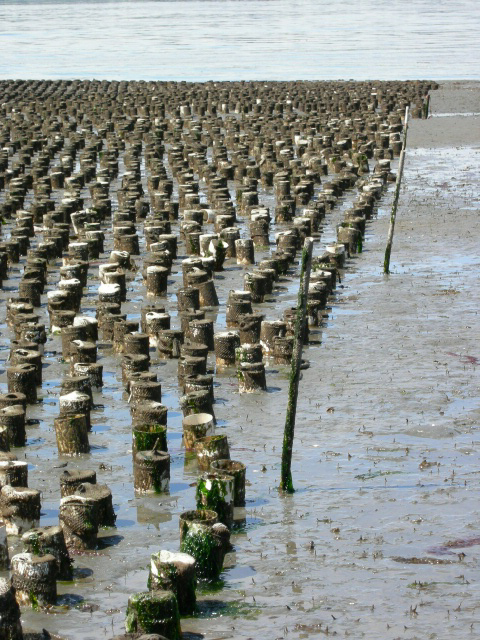 |
What do property owners get? There are two main inducements for the property owners: 1) Promise of financial gain without any effort other than leasing the property. 2) Assurance that the geoduck farming is good for the environment because geoducks "clean" the water. This is stated as fact by the geoduck operator. It is a seductive proposition. However the operators can offer no environmental impact studies on this type of commercial aquaculture in the intertidal zone. |
 |
Many residents on Zangle Cove do not want to see these commercial businesses on our tidelands. However, the geoduck operators, if they could, would farm the entire Cove. Property owners with farms have yelled at beach walkers to get away from their property, because it is a "business." Do we want our privately owned tidelands throughout Puget Sound to become an industrial zone? |
 |
Will the semi-permanent PVC pipe structure change the patterns of waves and sediment deposits? Will it affect the temperature of the water? Will it change the ecosystem of the cove? Will these structures and the harvest activities affect salmon spawning here? These are questions that have not been answered. |
Harvesting the Geoduck
After about 4 years, depending on the market, the geoducks are harvested using hand-held water jets that pump 50 gallons to the minute to liquefy the substrate in order to easily extract the geoducks. Because approximately three seed geoducks are planted per square foot, we can assume there are in excess of 43,500 geoducks per acre and that the harvest will liquefy and drastically disturb entire areas of the intertidal zone. Geoduck operators claim that after a few tides everything goes back to the way it was before. However, they concede that they harvest all the native geoducks and other animals that are saleable. Since there is an ecological balance on the tideland between all species, we question what effect this disturbance has on the other creatures in the intertidal zone and nearshore.
If it were only one farm, it might be overlooked, but operators are seeking to farm entire areas, including low bank sandy beach areas that have rural residential populations with historically high use of the beach for surface water activities.
Leases for geoduck farming can be for as long 12 years. This would calculate to 3-4 harvests. We have been told by a geoduck operator that the market is demanding smaller less expensive geoducks, which means more frequent harvests. Operators ask for leases with the potential for indefinite extension of the lease. Even though the PVC pipes are removed after about 18 months, the PVC forest would be replanted for a new crop after harvest, making it a semi-permanent structure.
Filtering the Water?
The shellfish industry asserts that geoduck farming is good for Puget Sound because geoducks filter massive amounts of water. However, in an article entitled Hood Canal Low Dissolved Oxygen Preliminary Assessment and Corrective Action Plan, May 6, 2004, the Puget Sound Action Team states that:
| In Hood Canal, we realize that healthy shoreline populations of shellfish can only filter a "strip" of nearshore water that is mostly "healthy" with adequate oxygen. No doubt the shellfish are filtering great quantities of water and assisting in removal of excess plankton, but they cannot extend their influence to filter large volumes of off-shore water. However, geoduck populations exist to depths exceeding 100 feet and may help to some extent. Page 38. |
Questions Not Answered
We have many questions which have not been answered.
We are not aware of any environmental impact study related to the intertidal zone farming and harvesting geoducks. There was an EIS written by the Department of Natural Resources for the harvest of native geoducks on state subtidal land, but farming and harvest on the intertidal zone seems to have gone under the radar.
